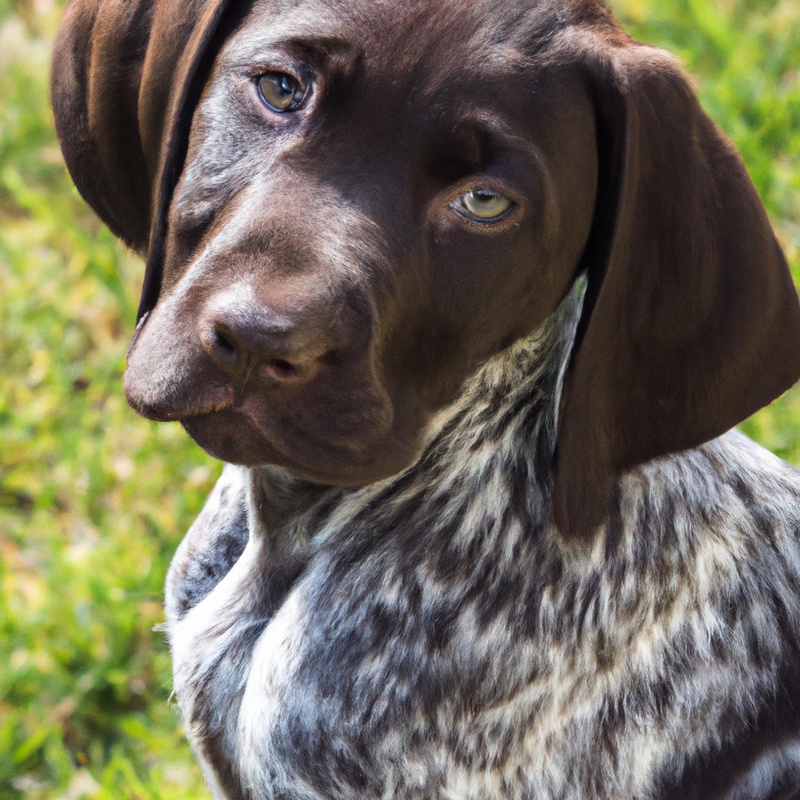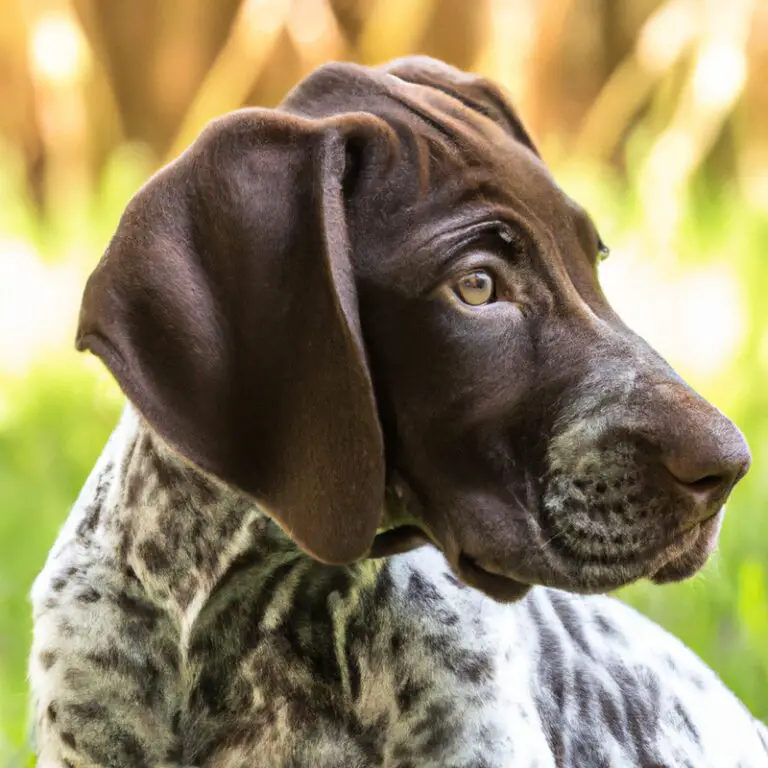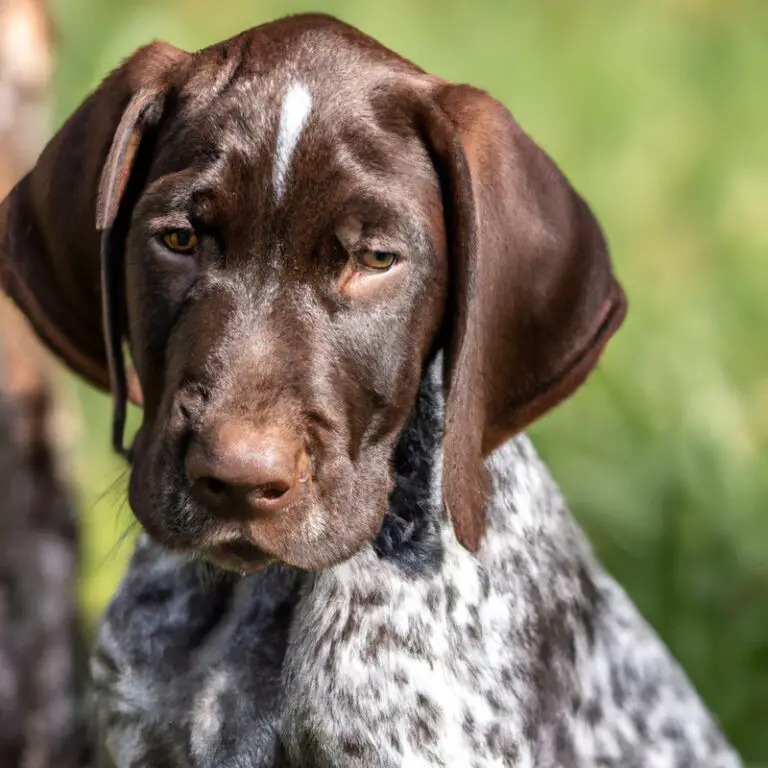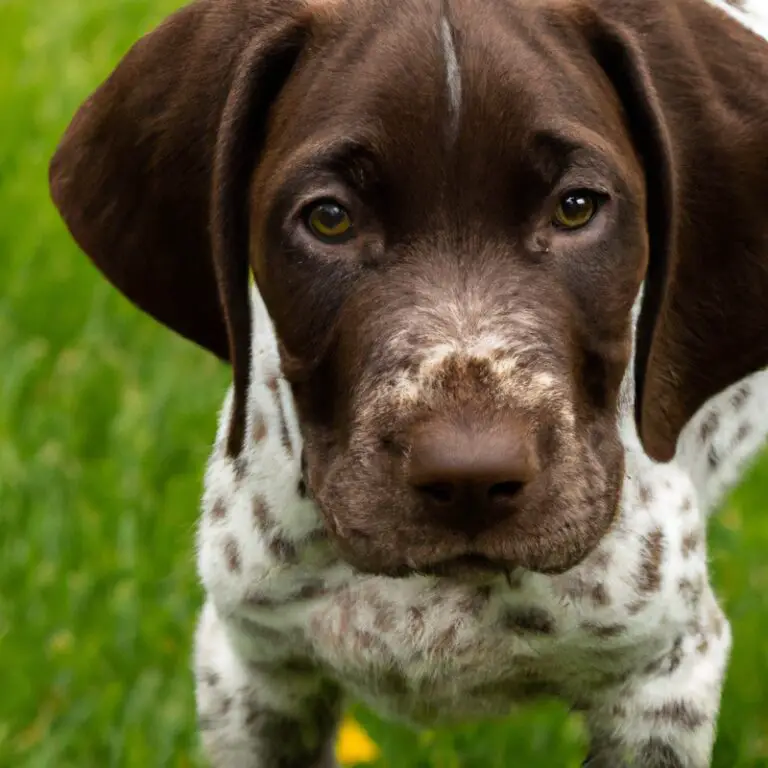Are German Shorthaired Pointers Good With Other Pets Like Hamsters Or Gerbils?
Key Takeaways:
- German Shorthaired Pointers can generally coexist peacefully with small pets like hamsters or gerbils if properly introduced and supervised.
- Early socialization and training can help ensure a German Shorthaired Pointer’s compatibility with other pets.
- Individual temperament and prey drive can vary, so it’s important to assess each German Shorthaired Pointer’s behavior around small animals.
- Close supervision and secure housing arrangements are essential for the safety of both the German Shorthaired Pointer and the smaller pets.
Have you ever wondered if German Shorthaired Pointers, those energetic and intelligent dogs, can peacefully coexist with smaller pets like hamsters or gerbils? As an expert on pet behavior and the proud owner of a German Shorthaired Pointer, I can confidently say that the answer lies in a combination of factors.
In this article, we will delve into the importance of training, size and energy levels, and prey instincts when considering introducing these lovable dogs to your furry little friends.
I will also provide you with some practical tips and insights on successful introductions, signs of compatibility, potential challenges, and alternatives to ensure a safe and harmonious environment for all. So, if you’re ready to find out if your German Shorthaired Pointer and small pets can become the best of buddies, grab a cup of coffee and read on!
| Pets | Compatibility with German Shorthaired Pointers |
|---|---|
| Hamsters | Not recommended |
| Gerbils | Not recommended |
Factors to Consider When Introducing German Shorthaired Pointers to Hamsters or Gerbils
Training and Socialization
When it comes to German Shorthaired Pointers, training and socialization are key. These dogs are intelligent and energetic, so it’s important to provide them with proper guidance and structure from an early age.
First and foremost, start training your German Shorthaired Pointer as soon as you bring them home.
Consistency is key, so establish clear rules and boundaries from the start. Use positive reinforcement techniques like treats and praise to reward good behavior and discourage undesirable actions.
Socialization is equally important.
Expose your German Shorthaired Pointer to a variety of people, animals, and environments to help them become well-rounded and confident. Take them to puppy classes, organize playdates with other friendly dogs, and introduce them to different sights, sounds, and smells.
By incorporating regular training sessions into your routine and providing ample opportunities for socialization, you can help your German Shorthaired Pointer become a well-behaved and sociable companion.
Remember to be patient, consistent, and always use positive reinforcement.
Size and Energy Levels
When considering the compatibility of German Shorthaired Pointers with smaller pets like hamsters or gerbils, size and energy levels are important factors to take into account. German Shorthaired Pointers are medium to large-sized dogs with high energy levels.
They are known for their athleticism and need for regular exercise.
Due to their size and energy, they may unintentionally harm or intimidate smaller animals, especially if they are not properly trained or socialized. It is crucial to carefully supervise interactions between a German Shorthaired Pointer and smaller pets to ensure the safety and well-being of all animals involved.
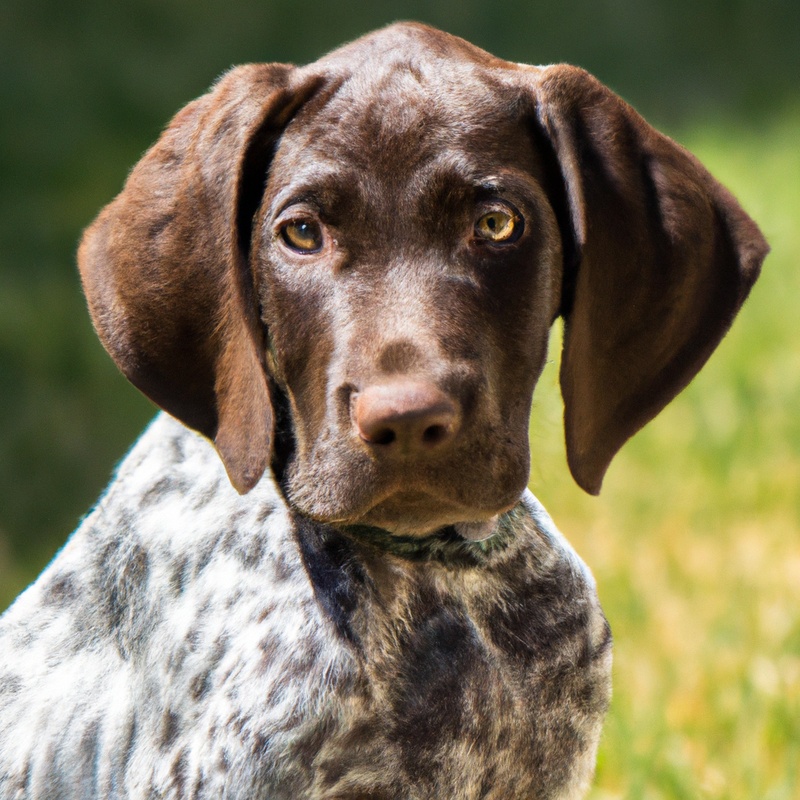
Prey Drive Instincts
Prey Drive Instincts are an important factor to consider when introducing German Shorthaired Pointers to smaller pets like hamsters or gerbils. These dogs have been bred for hunting, which means they have a strong natural instinct to chase and capture small animals.
First and foremost, it’s crucial to understand that German Shorthaired Pointers have a high prey drive, which means they may see small pets as prey and try to chase or harm them.
This instinct can be difficult to completely eliminate or control, even with training. Therefore, if you already have hamsters or gerbils and are considering bringing a German Shorthaired Pointer into your home, it’s crucial to supervise all interactions between them.
Never leave them alone together unsupervised, as this could result in harm to the smaller pets.
It’s also important to note that every dog is different, and some German Shorthaired Pointers may have a higher prey drive than others. Proper socialization, training, and obedience classes can help manage their instincts, but it’s important to understand that their prey drive may always be present to some extent.
Supervision and Safety Measures
Supervision and safety measures are vital when introducing German Shorthaired Pointers to small pets like hamsters or gerbils. First and foremost, it’s crucial to never leave them unsupervised together.
Always keep a close eye on their interactions to ensure the safety of all involved.
It’s important to establish boundaries and train your German Shorthaired Pointer to have self-control around smaller animals. Additionally, provide separate living spaces and secure enclosures to prevent any accidental harm.
By prioritizing supervision and implementing necessary safety measures, you can create a peaceful and safe environment for all your pets.
Tips for successfully Introducing German Shorthaired Pointers to Hamsters or Gerbils
Gradual Introductions
When introducing German Shorthaired Pointers to hamsters or gerbils, it’s important to take it slow and introduce them gradually. Rushing this process can lead to stress or potential harm to either pet.
Start by keeping them in separate areas of your home, allowing them to become familiar with each other’s scents.
Then, try supervised interactions through a barrier, such as a baby gate or a cage with bars. Observe their behavior closely and look for signs of comfort and curiosity.
Gradually increase their exposure to each other, always prioritizing their safety and well-being.
Controlled Environments
Controlled environments are essential when introducing German Shorthaired Pointers to smaller pets like hamsters or gerbils. First and foremost, make sure the area where the pets will interact is secured and escape-proof.
This could be a separate room or a well-fenced outdoor space.
Avoid open doors or windows to prevent any accidental escapes. Additionally, supervise all interactions between the pets closely, especially during the initial stages.
Keep in mind that German Shorthaired Pointers have hunting instincts, so it’s crucial to create a safe and controlled environment to ensure the well-being of all pets involved.
Positive Reinforcement
Positive reinforcement is a powerful tool when it comes to training German Shorthaired Pointers (GSPs) and introducing them to other pets like hamsters or gerbils. It involves rewarding desired behaviors to encourage their repetition.
By implementing positive reinforcement techniques, you can create a positive association between your GSP and the smaller pets, making the introduction smoother.
First and foremost, use treats or praise to reward your GSP for calm and gentle behavior around the hamsters or gerbils. This will reinforce their good behavior and help them understand what you expect from them.
Remember to be patient and consistent in your training efforts, as positive reinforcement takes time and consistency to be effective.
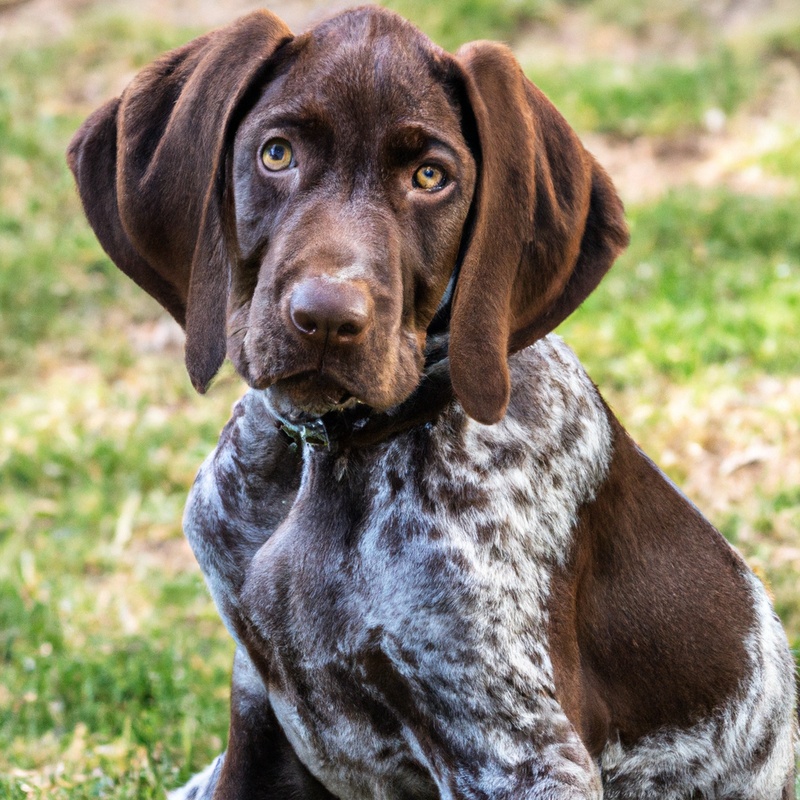
Consistency and Patience
Consistency and patience are key when introducing German Shorthaired Pointers to hamsters or gerbils. It’s important to be consistent in your approach and set clear boundaries for your dog.
This means enforcing rules consistently and not letting them chase or harm the small pets.
Patience is also crucial. The process of introducing your dog to small pets takes time and should be done gradually.
Allow them to get used to each other’s presence through scent and sight before any physical interaction occurs.

Signs of Compatibility and Bonding Between German Shorthaired Pointers and Hamsters or Gerbils
Calm and Relaxed Demeanor
Calm and Relaxed Demeanor A crucial aspect to consider when evaluating compatibility between German Shorthaired Pointers and smaller pets like hamsters or gerbils is the calm and relaxed demeanor of the dog. German Shorthaired Pointers are known for their even temperament and adaptable nature, making them generally well-suited to coexist with other animals in the household.
Their calm and relaxed demeanor helps reduce the likelihood of aggressive behavior towards smaller pets.
It’s important to note, however, that individual personalities and proper socialization play a significant role in determining how well a German Shorthaired Pointer will get along with smaller pets. So, it’s always recommended to introduce and monitor interactions carefully to ensure the safety and well-being of all pets involved.
Curiosity without Aggression
Curiosity without aggression can be a key factor in determining how well German Shorthaired Pointers interact with other pets like hamsters or gerbils. These energetic dogs are known for their curious nature, but it’s important to ensure that their curiosity doesn’t escalate into aggression towards smaller animals.
First and foremost, it’s essential to supervise any interactions between your German Shorthaired Pointer and your hamsters or gerbils.
This will allow you to intervene if any signs of aggression or rough play arise. It’s crucial to create a safe and controlled environment for all the pets involved.
Another aspect to consider is the breed’s prey drive.
German Shorthaired Pointers have a strong instinct to chase and hunt small animals. However, with proper training and early socialization, it is possible to encourage curiosity without aggression towards smaller pets.
The key is to teach your German Shorthaired Pointer that the hamsters or gerbils are part of the family and not prey.
Positive reinforcement techniques, such as rewards and praise, can be used to reinforce positive behavior and discourage aggression. Remember, every dog is different, and individual personalities can play a significant role in how well they can coexist with smaller pets.
Consulting with a professional dog trainer or animal behaviorist can provide valuable guidance tailored to your specific situation.
The Ability to Coexist Peacefully
The ability to coexist peacefully is an important factor to consider when introducing a German Shorthaired Pointer to small pets like hamsters or gerbils. These energetic hunting dogs have a strong prey drive, which means they may see smaller animals as potential targets.
It’s crucial to closely supervise interactions and never leave them alone unsupervised.
With proper training and socialization, some GSPs may be able to peacefully coexist with small pets, but it ultimately depends on the individual dog’s temperament and prey drive.
Playful Interactions
When it comes to playful interactions between German Shorthaired Pointers and small pets like hamsters or gerbils, it’s important to proceed with caution. These dogs are known for their high energy and strong prey drive, which means they may view smaller animals as potential prey.
First and foremost, it’s crucial to never leave a German Shorthaired Pointer unsupervised with a hamster or gerbil.
Even if your dog has shown no signs of aggression towards small animals, their instincts can still kick in during playtime. If you do want to introduce them to each other, start by keeping them in separate areas of the house and gradually allow them to get used to each other’s presence.
This can be done by placing their cages near each other and allowing them to observe each other from a safe distance.
Potential Challenges and Risks
Prey Drive Activation
Prey Drive Activation Alright, let’s talk about prey drive activation in German Shorthaired Pointers. Now, prey drive is an instinct that many dogs have.
It’s that strong urge to chase after small animals like squirrels, rabbits, and, yes, even hamsters or gerbils.
German Shorthaired Pointers are known to have a high prey drive. It’s in their nature as hunting dogs.
So, when it comes to being around smaller pets like hamsters or gerbils, it’s important to be cautious.
You see, when their prey drive is activated, these dogs might see a small pet as something to chase and potentially harm. It doesn’t mean they’re bad dogs, it’s just their instinct kicking in.
To prevent any incidents, it’s crucial to always supervise interactions between your German Shorthaired Pointer and smaller pets.
Making sure they’re securely separated is also a good idea, especially when you’re not around.
Injury or Harm to Smaller Pets
Injury or Harm to Smaller Pets is a potential concern when it comes to German Shorthaired Pointers. These dogs have a strong prey drive, which means they may view smaller pets like hamsters or gerbils as potential prey.
This can result in injury or even harm to the smaller pets if left unsupervised.
German Shorthaired Pointers have a natural instinct to chase, so it’s important to be cautious and never leave them alone with smaller animals. Instead, consider separating them or keeping them in a secure enclosure to ensure the safety of all pets involved.
Stress and Anxiety in Small Pets
Stress and anxiety in small pets can be a real concern for pet owners. Just like humans, small pets like hamsters or gerbils can experience these emotions.
It’s important to understand the signs of stress and anxiety in your small pet so you can help them feel safe and comfortable.
Some common signs of stress in small pets include biting or scratching themselves excessively, hiding more than usual, loss of appetite, aggressive behavior, or changes in sleep patterns. These signs may vary depending on the individual pet, so it’s important to observe your pet closely and look out for any unusual behavior.
There are a few things you can do to help reduce stress and anxiety in your small pet.
Creating a calm and secure environment is key. Make sure their cage or habitat is clean, comfortable, and has plenty of hiding places.
Providing toys, tunnels, or wheels for stimulation can also help keep their minds occupied and reduce boredom.
Another important factor is regular socialization and interaction. Spending quality time with your pet by handling or playing with them can build trust and provide a sense of security.
Just make sure to handle them gently and give them the opportunity to retreat if they feel overwhelmed.
In some cases, you may want to consult with a veterinarian who has experience with small pets. They can provide further advice on reducing stress and anxiety and may recommend suitable medications or treatments if necessary.
Alternatives for German Shorthaired Pointers and Small Pets
Keeping Pets Separated
Keeping pets separated is essential for ensuring the safety and well-being of all the animals in your home. The key is to create separate spaces and supervise interactions to prevent any accidents or conflicts.
First and foremost, make sure each pet has their own designated area, whether it’s a separate room or a specific section of your home.
This will give them a sense of security and help minimize stress. Additionally, it’s crucial to closely supervise any interactions between pets, especially in the beginning.
Keep them on leashes or use baby gates to maintain physical separation while allowing them to get accustomed to each other’s presence.
If you observe any signs of aggression or tension, such as growling, hissing, or raised fur, immediately separate the animals and seek professional advice from a veterinarian or animal behaviorist.
Choosing Respective Pet Species
When deciding on a pet, it’s important to consider the specific needs and compatibility of different species. First and foremost, think about your lifestyle and the amount of time and attention you can dedicate to a pet.
Are you more inclined towards an active and energetic pet or a low-maintenance one?
Another factor to consider is the size of your living space. Some pets require ample room to roam and play, while others can thrive in smaller environments.
It’s crucial to ensure that your living space is suitable for the needs of your chosen pet.
Also, think about the temperament of the pet species you are considering. Some pets are known to be more sociable and friendly with other animals, while others may have a higher prey drive or a territorial nature.
This is especially important if you already have other pets in your home or plan to introduce a new one in the future.
Lastly, research the specific care requirements of each species you are considering. Each pet has unique needs in terms of diet, exercise, grooming, and veterinary care.
Make sure you are prepared to provide the necessary care and attention to your chosen pet.
By taking into account these factors and doing some research, you will be able to choose the respective pet species that will best fit your lifestyle and create a harmonious environment for both you and your pet.
Final Verdict
When introducing German Shorthaired Pointers to hamsters or gerbils, there are several factors to consider. Proper training and socialization, size and energy levels, and prey drive instincts all play a role in determining compatibility.
Gradual introductions, controlled environments, positive reinforcement, and consistency are key tips for successful integration.
Signs of compatibility include calm demeanor, curiosity without aggression, peaceful coexistence, and playful interactions. However, potential challenges and risks, such as prey drive activation and harm to smaller pets, should not be underestimated.
If compatibility is not possible, keeping pets separated or choosing alternative pet species may be a safer option.
Overall, introducing German Shorthaired Pointers to hamsters or gerbils requires caution, supervision, and an understanding of the individual temperaments and behaviors of both species.

